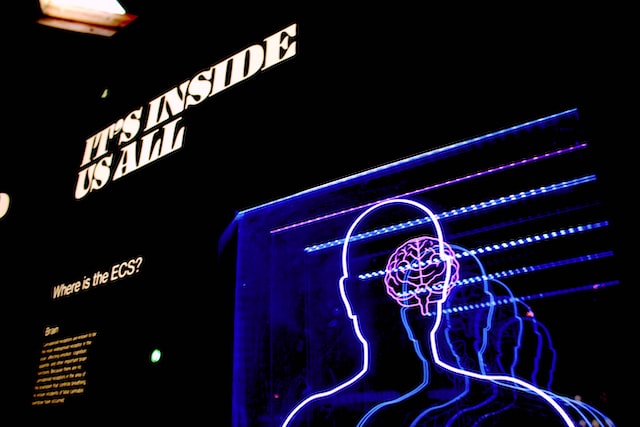A cognitive bias is a systematic pattern of deviation from rationality in judgment and decision-making, which can lead to irrational and illogical thinking. Cognitive biases are mental shortcuts that our brains take to simplify information processing, which can result in errors in judgment and decision-making.
Cognitive biases are a natural and often unconscious part of human thinking, but they can lead to mistakes and poor decisions if not recognized and addressed. Understanding and being aware of cognitive biases can help individuals and organizations make better decisions and avoid common pitfalls.
There are many different types of cognitive biases, which can be broadly categorized as follows:
Confirmation Bias:
Confirmation bias refers to the tendency of people to seek, interpret, and remember information in a way that confirms their pre-existing beliefs, values, and assumptions. It is a type of cognitive bias that can affect our decision-making and lead us to overlook or dismiss information that contradicts our beliefs.
Confirmation bias can arise in many contexts, such as politics, science, religion, and interpersonal relationships. For example, a person who firmly believes that vaccines are harmful may be more likely to seek information confirming this belief while ignoring or dismissing evidence that suggests otherwise.
Similarly, a person who strongly identifies with a particular political ideology may be more likely to accept information that supports their views and reject information that challenges them.
Confirmation bias can be harmful because it can lead us to make poor decisions, reinforce stereotypes and prejudices, and limit our ability to learn and grow. To overcome confirmation bias, it is important to be open-minded, actively seek out diverse perspectives and information, and critically evaluate our own beliefs and assumptions.
Availability Bias:
Availability bias is a cognitive bias that occurs when people overestimate the likelihood of events based on how easily they can remember or recall similar events. This bias occurs because people tend to rely on easily available information in their memory rather than considering all available information.
For example, suppose someone has recently seen or heard about a plane crash on the news. In that case, they may overestimate the likelihood of a plane crash occurring in their own life, even though statistically, plane crashes are infrequent. This is because the plane crash is more readily available in their memory due to its recent occurrence and media coverage.
Availability bias can also affect decision-making in other areas, such as politics or business. People may be more likely to support policies or investments based on recent news stories, even if those stories do not represent the overall situation.
It is important to seek out and consider a wide range of information and sources to avoid availability bias rather than relying solely on what is most readily available or memorable. It can also be helpful to take a step back and consider the overall statistical likelihood of an event rather than relying solely on recent or vivid examples.
Anchoring Bias:
Anchoring bias is a cognitive bias where individuals rely too heavily on the first piece of information they receive (the anchor) when making decisions or estimates, even when that information may be irrelevant or misleading. Once an anchor is established, it can influence subsequent judgments and decisions, leading to a bias toward that initial information.
Anchoring bias can be a powerful influence on decision-making. Still, it can also be mitigated by consciously considering alternative anchors or sources of information and taking a more systematic and rational approach to decision-making.
Here are some examples of anchoring bias:
- Salary negotiations: In a job interview, the employer may start by offering a low salary. The job candidate may anchor on that low number and be unable to negotiate a higher salary even if they have valuable skills and experience.
- Retail pricing: Retailers may use an original inflated price for a product to make the current discounted price seem like a better deal. Customers may anchor on the original price and believe they are getting a great deal, even if the product’s actual value is much lower.
- Real estate agents may anchor buyers to a higher price range by showing them expensive properties first. Buyers may anchor their expectations to that higher price range and struggle to find a suitable property within their budget.
- Restaurant menu pricing: Restaurants may use high-priced items on their menus to anchor customers to a higher price point. Customers may then be more likely to order more expensive items even if more reasonably priced options are available.
Overconfidence Bias:
Overconfidence bias is a cognitive bias where an individual overestimates their abilities, knowledge, or skills in a particular domain. This bias can manifest in various ways, such as overestimating one’s likelihood of success, underestimating the risks involved in a decision, or overestimating the accuracy of one’s beliefs.
Overconfidence bias can negatively affect various areas of life, such as business, finance, and decision-making. For example, overconfident traders may take on excessive risks in the stock market, leading to substantial losses. In medical decision-making, overconfident doctors may fail to consider alternative diagnoses, leading to incorrect diagnoses and ineffective treatment plans.
To avoid the negative consequences of overconfidence bias, it is essential to cultivate self-awareness and seek diverse perspectives and feedback from others. Engaging in critical thinking and being open to new information and ideas can also help mitigate overconfidence bias.
Hindsight Bias:
Hindsight bias, also known as the “I-knew-it-all-along” phenomenon, is the tendency for people to believe, after an event has occurred, that they would have predicted or expected the outcome, even though they had no way of knowing it beforehand. In other words, people tend to overestimate their ability to predict the outcome of an event once they know what has actually happened.
Hindsight bias can have several negative effects, particularly in fields where accurate predictions are essential, such as finance, politics, and medicine. It can lead to overconfidence and complacency, as people may assume that they will always be able to accurately predict the outcome of future events based on their previous experiences. This can result in poor decision-making and missed opportunities.
To avoid the adverse effects of hindsight bias, it is important to remain aware of the limits of our knowledge and to recognize that we may not always be able to accurately predict the outcome of future events, even if we have extensive knowledge and experience. It is also important to gather and analyze data objectively and to avoid making assumptions based solely on experience or personal biases.
Here are a few examples of hindsight bias:
- After a stock market crash, investors may believe they should have seen it coming and sold their stocks beforehand, even though it was impossible to predict the crash with certainty.
- After a political election, people may believe that they knew all along who the winner would be, even if they did not predict the outcome beforehand and the election was closely contested.
In each of these examples, people are retrospectively overestimating their ability to predict the outcome of an event based on the knowledge they have gained after the event.
Framing Effect:
The framing effect is a cognitive bias where people’s decisions are influenced by how information is presented rather than the actual information itself. This means that framing a problem or decision can influence how people perceive it and ultimately affect their choices.
Here are some examples of the framing effect:
- Political campaigns: In a political campaign, candidates may frame an issue positively or negatively, depending on their agenda. For example, a candidate may frame a tax increase as necessary for improving public services or as an unnecessary burden on taxpayers.
- Advertising: Advertisers may use different frames to promote a product. For example, a cosmetic company may frame their product as being “anti-aging” rather than “wrinkle-reducing” to emphasize the positive benefits rather than the negative aspect of aging.
- News headlines: The framing effect can also be seen in how news headlines are presented. Depending on how a headline is framed, readers may perceive a story in a positive or negative light, even if the story’s content remains the same.
- Legal cases: How a legal case is framed can influence a jury’s decision. For example, a lawyer may frame a case as being about protecting the rights of an individual or as a matter of public safety. Framing can influence how the jury perceives the case and ultimately affects their decision.
Negativity Bias:
Negativity bias is a psychological phenomenon that refers to the tendency to pay more attention to and give more weight to negative experiences and information than to positive ones. It is a natural and automatic process that helps us to identify and respond to potential threats, but it can also lead to a heightened sensitivity to negative information and a tendency to overlook positive information.
Awareness of negativity bias can help individuals to challenge their negative thinking patterns and develop a more balanced perspective. Techniques such as mindfulness and cognitive behavioral therapy can help reduce the impact of negativity bias.
Here are a few examples of negativity bias:
- Remembering negative events more vividly: People tend to remember negative events more vividly than positive ones. For example, suppose someone has a bad experience at a restaurant. In that case, they are more likely to remember the details of the bad experience and hold a grudge against the restaurant rather than remembering any positive experiences they may have had there in the past.
- Focusing on criticism: People are more likely to focus on criticism rather than praise. For example, suppose someone receives a mix of positive and negative feedback on a project. In that case, they are more likely to focus on the negative feedback and feel discouraged rather than focusing on the positive feedback and feeling motivated.
- Distorted thinking: Negativity bias can lead to distorted thinking, such as catastrophizing or jumping to negative conclusions. For example, if someone receives an email from their boss with a critical tone, they may conclude that they are about to be fired rather than considering other possibilities.
Self-Serving Bias:
Self-serving bias is a cognitive bias that refers to the tendency of individuals to attribute their successes to internal factors, such as their abilities and efforts, and their failures to external factors, such as bad luck or the actions of others. This bias allows individuals to maintain a positive self-image and protect their self-esteem.
For example, if a student does well on a test, they may attribute their success to their intelligence or hard work. However, if they perform poorly, they may attribute their failure to the difficulty of the test or a lack of preparation time.
Self-serving bias can also be seen in group settings, where individuals may take credit for successes while blaming others for failures. This can lead to conflicts and a breakdown in group cohesion.
While self-serving bias can help maintain self-esteem, it can also lead to inaccurate attributions and a lack of personal responsibility. Recognizing and correcting for this bias can lead to more accurate self-evaluations and improved decision-making.
Bandwagon Effect:
The bandwagon effect is a psychological phenomenon in which people tend to adopt beliefs or behaviors because they see others doing the same thing rather than making independent decisions based on their beliefs or values. This can happen in various contexts, from politics to fashion to consumer behavior.
The bandwagon effect is often driven by a desire to conform to social norms or to avoid being seen as different or out of touch with the group. A sense of momentum or excitement around a particular idea or trend can also fuel it.
While the bandwagon effect can be powerful, it’s important to remember that it doesn’t necessarily reflect individuals’ true beliefs or values. Thinking critically and making decisions based on your own research and analysis is always a good idea, rather than simply following the crowd.
Here are some examples of the bandwagon effect:
- Political elections: A candidate perceived as famous or likely to win may attract more support simply because people want to be associated with a winner or part of the majority.
- Fashion trends: People may adopt a particular style or fashion trend because it’s popular, without necessarily considering whether it suits their taste or style.
- Social media: The popularity of a social media post or hashtag can create a sense of momentum or excitement, encouraging others to join in and share or like the post.
- Technology trends: People may feel pressure to adopt new technology or gadgets simply because they are popular or widely used rather than because they meet their specific needs or preferences.
- Consumer behavior: The popularity of a product or brand can create a sense of trust or familiarity, making people more likely to choose that product or brand over others.
It’s important to note that the bandwagon effect can be influenced by various factors, including social influence, peer pressure, and the desire to conform to social norms. As a result, it’s often important to consider the underlying motivations and beliefs driving people’s behavior rather than simply following the crowd.
Endowment Effect:
The endowment effect is a cognitive bias that describes people’s tendency to value an object or item more when they own it than when they do not. This effect has been observed in various studies and experiments, and it can influence our decision-making in several ways.
Economist Richard Thaler first described the endowment effect in 1980. In his study, Thaler found that people who were given a mug as a gift were willing to sell it for a much higher price than those who did not receive a mug but were offered to buy it. Thaler suggested that owning the mug led people to attach additional value to it, making them reluctant to part with it for a lower price.
The endowment effect can have significant economic, marketing, and psychological implications. For example, it can help explain why people may be willing to pay a premium for goods with sentimental value or why they may be reluctant to sell stocks or other assets, even when it may be financially beneficial. Marketers can use this bias to their advantage by creating a sense of ownership or attachment to their products, leading to increased sales and customer loyalty.
Here are a few examples of the endowment effect:
- Personal belongings: You may be more willing to pay more for an item you already own, such as a piece of furniture or a piece of jewelry, compared to the same item you do not own. This is because you place a higher value on the item simply because it is yours.
- Sports memorabilia: Sports fans may place a higher value on items such as autographed jerseys or game-used equipment that belonged to their favorite athletes. They may be willing to pay more for these items than they would for similar items that did not have this personal connection.
- Housing market: Homeowners may have an inflated sense of the value of their homes due to the endowment effect. They may be reluctant to sell their home for a lower price than they perceive it to be worth, even if the market conditions dictate otherwise.
Sunk Cost Fallacy:
The sunk cost fallacy is a cognitive bias that occurs when someone continues to invest time, money or other resources in a project or decision based on the amount they have already invested rather than considering the current and future value of the investment.
In other words, the sunk cost fallacy is the tendency to persist with a decision or investment that has already cost us something, even if it no longer makes sense to do so. This is because people tend to focus on what they have already invested rather than objectively assessing the future value of the investment.
For example, someone might continue to invest money in a failing business venture because they have already invested a large amount of money into it rather than cutting their losses and moving on. Similarly, a person might continue to watch a movie they don’t like because they have already paid for the ticket rather than leaving and doing something more enjoyable with their time.
The sunk cost fallacy can lead to irrational decision-making, and it’s important to recognize when it’s happening to make better decisions based on current and future value rather than past investments.
Here are some examples of the sunk cost fallacy:
- Continuing to attend a university program that you don’t enjoy: You might feel compelled to complete it because you’ve already invested several years of your life and a significant amount of money into it, even if you’re unhappy and unfulfilled.
- Continuing to repair an old car that has become a financial burden: You might feel that you need to continue repairing the car because you’ve already invested a significant amount of money into it, even if it’s become unreliable and costing you more money than it’s worth.
- Continuing to invest in a failing business: You might feel that you need to continue investing in a business that is losing money because you’ve already invested a significant amount of money into it, even if it’s unlikely to turn a profit.
- Continuing to read a book that you don’t enjoy: You might need to continue reading it because you’ve already invested a significant amount of time into it, even if it’s not enjoyable or valuable to you.
- Continuing to play a video game that you don’t enjoy: You might feel that you need to continue playing the game because you’ve already invested a significant amount of time into it, even if it’s not fun or rewarding anymore.
In these examples, the individual continues to invest time, money, or other resources into something no longer valuable simply because they’ve already invested so much.











